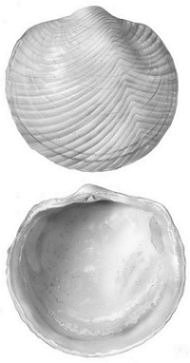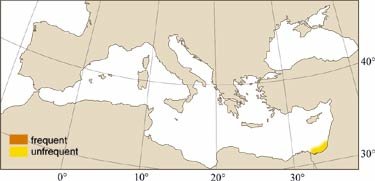
|
Relevant Synonyms
Misidentification
|
|
| drawing: Tuvia Kurz |
|
SHORT
DESCRIPTION
color :
ivory-white.
common size :
shell to 20 mm. Maximum in Red Sea 22 x 21 x 7 mm. |
DISTINGUISHING CHARACTERISTICS
BIOLOGY / ECOLOGY
habitat :
in sand (quartz sand not coral sand) in shallow water; also in seagrass beds at depth 1-2 m. |
|
1st
Mediterranean record
|

|
|
DISTRIBUTION
|
ESTABLISHMENT SUCCESS
speculated reasons for success :
|
|
|
MODE OF
INTRODUCTION |
IMPORTANCE TO
HUMANS |
|
KEY
REFERENCES
|
|
|
 Divaricella quadrisulcata Lamy, 1916 [Moazzo, 1939]
Divaricella quadrisulcata Lamy, 1916 [Moazzo, 1939]